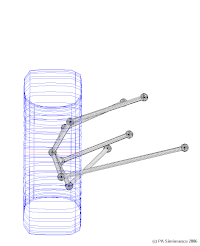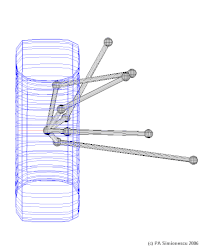
Back Suspensió multibraç Catalan Víceprvková náprava Czech Mehrlenkerachse German Suspensión multibrazo Spanish Monivarsituenta Finnish マルチリンク式サスペンション Japanese 멀티링크 식 서스펜션 Korean Suspensão multibraço Portuguese
A multi-link suspension is a type of independent vehicle suspension having three or more control links per wheel.[1] These arms do not have to be of equal length, and may be angled away from their "obvious" direction. It was first introduced in the late 1960s on the Mercedes-Benz C111[2] and later on their W201 and W124 series.[3][4]
Typically each arm has a spherical joint (ball joint) or rubber bushing at each end. Consequently, they react to loads along their own length, in tension and compression, but not in bending. Some multi-links do use a trailing arm, control arm or wishbone, which has two bushings at one end.
On a front suspension one of the lateral arms is replaced by the tie-rod, which connects the rack or steering box to the wheel hub.
- ^ "Rear Multi-link".
- ^ Bastow, D. (1970) Suspension ad Steering, Automobile Engineer, 8 May 1970, 217–231.
- ^ von der Ohe, M. (1984) Independent Wheel Suspension, US Pat. 4,444,415, Filed Dec. 23, 1981
- ^ von der Ohe, M. (1983) Front and Rear Suspension of the New Model W201, SAE technical Paper 831045.

